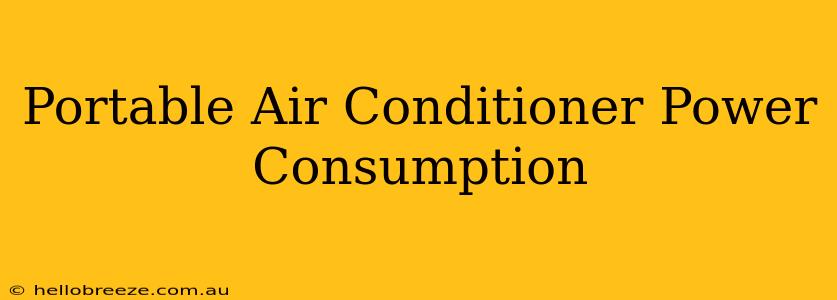Choosing a portable air conditioner can be tricky. Beyond cooling power and features, understanding portable air conditioner power consumption is crucial for both your comfort and your wallet. This guide breaks down everything you need to know about energy usage, helping you make an informed decision.
Understanding the Energy Consumption of Portable AC Units
Portable air conditioners, while convenient, generally consume more energy than window or central units. This is primarily due to their less efficient design and the need to vent hot air externally. The power consumption is measured in watts (W) and often expressed as kilowatt-hours (kWh) – the amount of energy used over an hour.
Factors Affecting Power Consumption
Several factors influence how much energy your portable AC unit will use:
-
BTU Rating: The British Thermal Unit (BTU) rating indicates the cooling capacity. Higher BTU ratings mean more powerful cooling, but also higher energy consumption. Choose a BTU rating appropriate for the size of the room. Oversizing can lead to wasted energy.
-
Energy Efficiency Rating (EER): This rating indicates how efficiently the unit converts energy into cooling. A higher EER means more cooling per watt of energy used. Look for units with a higher EER for better energy efficiency. The newer SEER (Seasonal Energy Efficiency Ratio) rating is also important, representing the average efficiency over a cooling season.
-
Unit Size and Features: Larger units naturally consume more power. Additional features like dehumidification or fan-only modes can impact energy use.
-
Room Size and Insulation: A poorly insulated room will require the AC unit to work harder, increasing energy consumption. Proper insulation and sealing windows and doors can significantly reduce energy use.
-
Usage Habits: Leaving the unit running continuously when not needed will drastically increase your energy bill. Use a programmable timer or smart features for optimal energy savings.
Calculating Your Portable AC's Energy Costs
To estimate your monthly energy costs, follow these steps:
-
Find the unit's power consumption (watts): This information is usually found on the unit's label or in the user manual.
-
Determine daily usage: Estimate the number of hours you'll run the unit daily.
-
Convert watts to kilowatts: Divide the wattage by 1000.
-
Calculate daily kWh: Multiply the kilowatts by the daily usage hours.
-
Calculate monthly kWh: Multiply the daily kWh by the number of days in the month.
-
Determine your cost per kWh: Check your electricity bill for the cost per kilowatt-hour.
-
Calculate total monthly cost: Multiply the monthly kWh by your cost per kWh.
Tips for Reducing Portable AC Power Consumption
Several strategies can minimize energy consumption and lower your electricity bill:
-
Choose an Energy-Efficient Model: Select a unit with a high EER or SEER rating.
-
Proper Room Insulation: Ensure your room is properly insulated to reduce heat gain.
-
Strategic Placement: Place the unit in a well-ventilated area to maximize efficiency.
-
Regular Maintenance: Clean or replace filters regularly to maintain optimal performance and energy efficiency.
-
Use Smart Features: Utilize programmable timers or smart features to optimize usage and avoid unnecessary runtime.
-
Close Doors and Windows: Prevent cool air from escaping by keeping doors and windows closed while the unit is running.
-
Consider a Smaller Unit for Smaller Rooms: Avoid oversizing your portable AC unit. Using the appropriate size unit for the room will result in better energy efficiency and reduce running costs.
Choosing the Right Portable Air Conditioner
By understanding portable air conditioner power consumption and implementing these energy-saving tips, you can enjoy cool comfort without breaking the bank. Remember to consider your room size, cooling needs, and budget when selecting a unit. Prioritize energy efficiency to minimize your environmental impact and save money in the long run.

